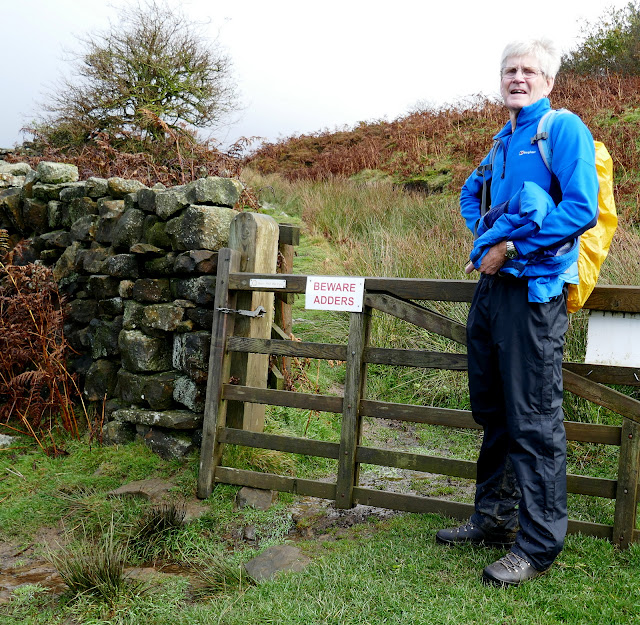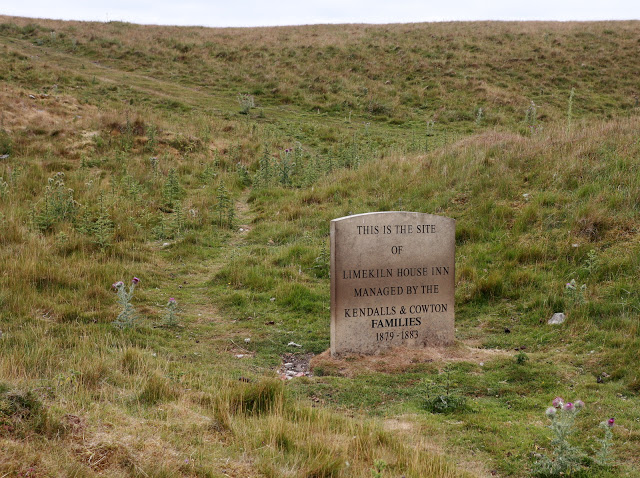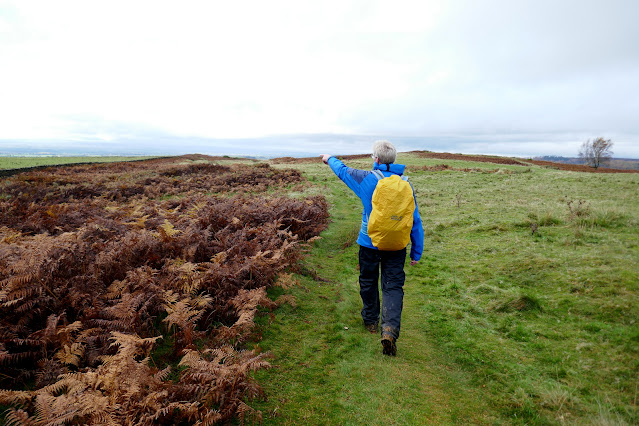5.5 miles Mostly dull
A look back through the blog shows that we've only done this short walk of Tom Scott Burns once in nearly 5 years, and that was over 2 years ago.
We approached Kepwick from the A19 via Leake Lane and parked our cars in a new (to us) car park next door to the old school, now converted to a house.
Tom Scott Burns suggests that Kepwick is derived from the Scandinavian Kaeppi and Vik, producing Kaeppivik which means 'a nook in the hills'. It's mentioned in the Domesday Book as Capuic.
In Victorian times it was noted for its lime and sandstone quarries and a railway ran from Kepwick to kilns on the Yarm to Thirsk turnpike road until 1893.
We turned left out of the car park and walked east through the village and admired some of the pretty cottages scattered along the main street, before coming to the main gates of Kepwick Hall.
At the gates of Kepwick Hall we turned left, and after petting a friendly ram who came over to see us, we followed the tarmac road to cross the remains of the old railway line.
"Don't pass me by.."
"Just a bit more to the right.."
The bed of the old mineral railway
Lots of water about today..
We turned off the road to climb slowly past French Hill Wood to isolated Nab Farm where cattle had been roaming freely and had made an awful mess of the paths.
Bear right here..
Well, we've been warned!
French Hill
I think these are Southdown sheep
Teddy bear sheep
French Hill
Approaching Nab Farm
Residents at Nab Farm
The path goes through the farm buildings and we hesitated when we met a lone cow which was making a lot of noise, as if distressed. There was no way round so we bravely marched on, it wasn't in the least interested in us.
Leaving Nab Farm behind we looked down across the valley, over Bridge Beck towards Whitestone Scar and Kepwick Moor on the horizon. We could see our path all the way to the high moor.
On reaching an old lime kiln, the path can be seen climbing steeply away from it and is a nice green path alongside a dry stone wall. After a sharp climb we reached a junction of paths where we joined the old Drovers' Road.
Looking back to Nab Farm
Inspecting the lime kiln
Looking over to White Gill from the lime kiln
A steep climb after the lime kiln
We followed the Drovers' road and at a gate we sat behind a wall out of the wind and enjoyed our coffee and scones.
View from the Drove road, Nab Farm to the right and Kepwick to the left
Any scone for me? We are watched as we dine
Opposite our rest stop was the remains of Limekiln House but today all that can be seen of the building are a few stony outcrops and a recently added marker stone. Nearby is a small cross dedicated to Bert 2005 RIP who we presume was a dog.
We walked along the old Drovers' road for nearly two miles, until we reached the remains of Steeple Cross. TSB tells us that Steeple Cross was referred to as Stepingecross in documents dated 1290 and was probably derived from the old English 'steapinga' - 'dweller on the slope', hence 'crossroads of the hill-dwellers'. All round this area are Bronze Age earthworks.
Approaching Steeple Cross
The remains of Steeple Cross

We turned right at Steeple Cross and walked along the edge of a forestry plantation, soon beginning a slow descent that ends at the top of Gallows Hill.
Walkers standing on Gallows Hill
Through the gate...... and towards the forestry plantation
Descending through the trees
A choice of two tracks here, take the upper one
Eventually we went through a moor gate where the path becomes a sunken hollow as it crosses the flat plain of Pen Hill.
After Pen Hill we started a descent of Atlay Bank. Rhododendrons used to grow thickly on either side of the path for several hundred yards but they have been cut down as part of a managed programme.
This has made quite a difference to the feel of the descent as the 'before' and 'after' photos show.
We crossed the field and reached the road turning right to walk through Kepwick where there is a small privately owned chapel which unfortunately is locked to the public but has an interesting history.
Originally this building was a mission room but was rebuilt as a chapel by the Warner family of Kepwick Hall, whose only son was shot down during WWI whilst serving with the RFC against Baron Richthofen's flying circus.
Interestingly Warner's late sister formed the basis of one of James Herriot's characters, Mrs Pumphries, who owned the pekingese Tricky Woo.
We made our way back to the car park and a short drive took us to Osmotherley where we reflected on today's shorter than usual walk over a welcome pint.





















































No comments:
Post a Comment